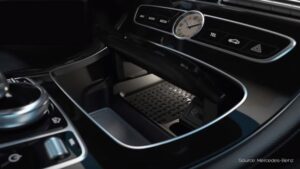Is your Tesla wall charger giving you trouble? Don’t worry, we’ve got you covered! In this article, we will show you how to fix your Tesla wall charger so you can get back to charging your beloved electric vehicle hassle-free. Whether you’re experiencing a charging issue or simply need some guidance on troubleshooting, we will guide you through the process step-by-step. So, if you’re wondering how to fix your Tesla wall charger, keep reading to find all the answers you need. Let’s get started!
How to Fix Tesla Wall Charger: A Comprehensive Guide
Introduction
As a proud owner of a Tesla electric vehicle, having a functional and reliable wall charger is essential for a hassle-free charging experience. However, like any electronic device, the Tesla wall charger may encounter issues over time. In this guide, we will walk you through the process of fixing common problems that you may face with your Tesla wall charger. From basic troubleshooting to more advanced solutions, we’ve got you covered. So, let’s dive in and get your wall charger up and running again!
Troubleshooting Common Issues
Even though Tesla wall chargers are known for their reliability, there are a few common issues you might encounter. Before diving into complex repairs, it’s always a good idea to perform some basic troubleshooting steps that can often resolve the problem. Here are a few things you can try:
- Check the power source: Ensure that the outlet you are using to power the wall charger is functioning correctly. Try plugging in another device to confirm if the outlet is providing power.
- Inspect the power cable: Examine the power cable for any visible signs of damage, such as cuts or frayed wires. If you notice any issues, it may be time to replace the cable.
- Reset the wall charger: Sometimes, a simple reset can fix minor glitches. Locate the circuit breaker connected to your wall charger and turn it off and on again.
- Verify the connection: Double-check that the power cable is securely connected to both the wall charger and your Tesla vehicle. A loose connection can prevent charging.
- Restart your Tesla vehicle: In some cases, restarting your Tesla car can help resolve charging-related issues. Turn off your vehicle, wait for a few minutes, and then power it back on.
Inspecting the Charging Cable
If the basic troubleshooting steps do not resolve the issue, it’s time to take a closer look at the charging cable itself. The charging cable is a crucial component of the Tesla wall charger, and wear and tear can lead to problems. Follow these steps to inspect the charging cable:
- Inspect the cable’s exterior: Look for any visible signs of damage along the length of the cable. Check for cuts, kinks, or exposed wires. If you notice any issues, it’s best to replace the cable.
- Check the connectors: Examine both ends of the charging cable where it connects to the wall charger and your Tesla vehicle. Ensure that the connectors are clean and free from debris or corrosion. If necessary, clean them gently using a soft cloth.
- Perform a continuity test: If you have a multi-meter, you can perform a continuity test on the charging cable to identify any internal wiring issues. Follow the manufacturer’s instructions to perform the test accurately.
- Consider a replacement: If the charging cable shows signs of significant damage or fails the continuity test, it may be time to purchase a new cable. Contact Tesla or an authorized dealer for a suitable replacement.
Resetting the Tesla Wall Charger
If the issue persists even after inspecting the charging cable, resetting the Tesla wall charger itself may help. Here’s how you can reset your Tesla wall charger:
- Locate the circuit breaker: Find the circuit breaker connected to your wall charger. It is usually mounted on the wall near the charger or in the electrical panel of your home.
- Switch off the circuit breaker: Turn off the circuit breaker corresponding to your Tesla wall charger. This will cut off power supply to the charger.
- Wait for a few minutes: Leave the circuit breaker off for a couple of minutes to ensure that the charger is completely powered down.
- Turn on the circuit breaker: After waiting, flip the circuit breaker back on to restore power to the Tesla wall charger.
- Observe the wall charger: Pay attention to any LED indicators on the wall charger. If the reset was successful, the charger should show signs of power and readiness.
Advanced Troubleshooting and Repairs
If the previous steps did not resolve the issue and you are comfortable working with electrical components, you can try advanced troubleshooting and repairs. However, please note that attempting complex repairs can be risky and may void your warranty. Consider contacting Tesla or a certified electrician before proceeding. Here are a few additional steps you can take:
- Check the circuit breaker: Ensure that the circuit breaker connected to your wall charger is appropriately sized for its electrical requirements. A breaker with insufficient capacity can cause charging issues.
- Inspect the internal wiring: If you are confident in your abilities, you can open the wall charger unit and carefully inspect the internal wiring. Look for loose connections or damaged components.
- Replace faulty components: If you identify any faulty components during the inspection, such as capacitors or resistors, you can replace them with compatible parts. However, exercise caution and refer to Tesla’s documentation or seek professional guidance if needed.
- Consider professional assistance: If you are unsure about performing advanced repairs, it is highly recommended to seek the assistance of a certified electrician or contact Tesla’s customer support for further guidance.
In this comprehensive guide, we have covered various troubleshooting steps and repairs to help you fix common issues with your Tesla wall charger. Always start with basic troubleshooting before moving onto advanced repairs, and consider professional assistance if necessary. Remember to prioritize your safety and follow appropriate precautions when working with electrical components. With a little patience and determination, you can get your Tesla wall charger back in working order and continue enjoying the convenience of electric vehicle charging. Happy driving!
How to Commission Tesla Wall Charger Gen 3

Frequently Asked Questions
How do I troubleshoot my Tesla wall charger?
1. Check the power source: Ensure that the wall charger is securely connected to a working power outlet and that there is no issue with the circuit breaker.
Why is my Tesla wall charger not providing any power?
2. Inspect the charging cable: Examine the charging cable for any signs of damage or wear. If there are any visible issues, consider replacing the cable.
My Tesla wall charger is not charging my vehicle. What should I do?
3. Restart the charger: Try turning off the wall charger by flipping the circuit breaker or unplugging it, waiting for a few minutes, and then plugging it back in or turning the circuit breaker back on.
What should I do if my Tesla wall charger is displaying an error message?
4. Reset the charger: Locate the small reset button on the wall charger and press it using a small tool, like a paperclip. This will reset the charger and may resolve any error messages.
Why is my Tesla wall charger charging my vehicle very slowly?
5. Adjust the charging settings: Check the charging settings on your Tesla vehicle’s touchscreen or mobile app. Ensure that the charging limit is set to the desired level and that any scheduled charging settings match your needs.
Can I fix a faulty Tesla wall charger by myself?
6. Contact Tesla support: It is recommended to reach out to Tesla’s customer support for assistance with troubleshooting or fixing a faulty wall charger. They can provide guidance based on your specific situation and help determine if any repairs or replacements are necessary.
Final Thoughts
To fix a Tesla wall charger, start by ensuring that the charger is properly connected to the power source. If the charger is not receiving power, check the circuit breaker and reset if necessary. Next, inspect the charging cable for any damage or loose connections. If the cable is damaged, it may need to be replaced. Additionally, try resetting the charger by power cycling it. This can often resolve minor issues. If none of these steps resolve the problem, it is recommended to contact Tesla support for further assistance in fixing the Tesla wall charger.



